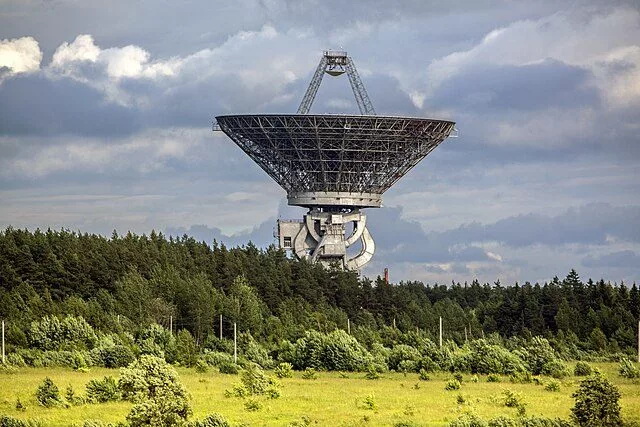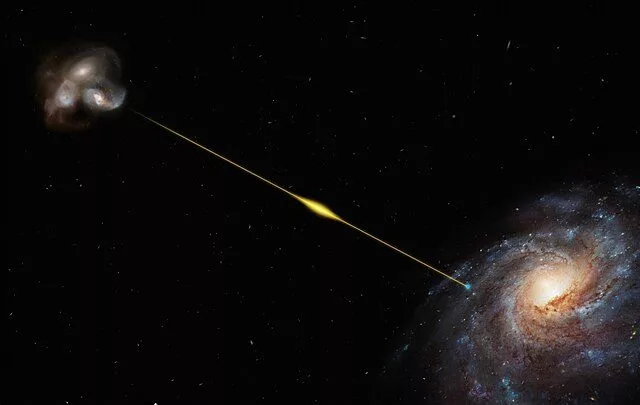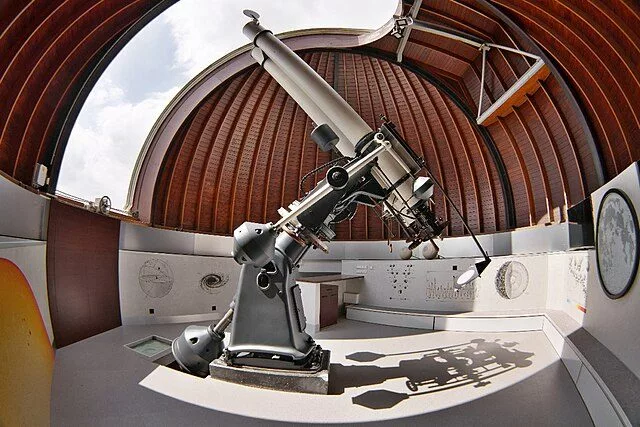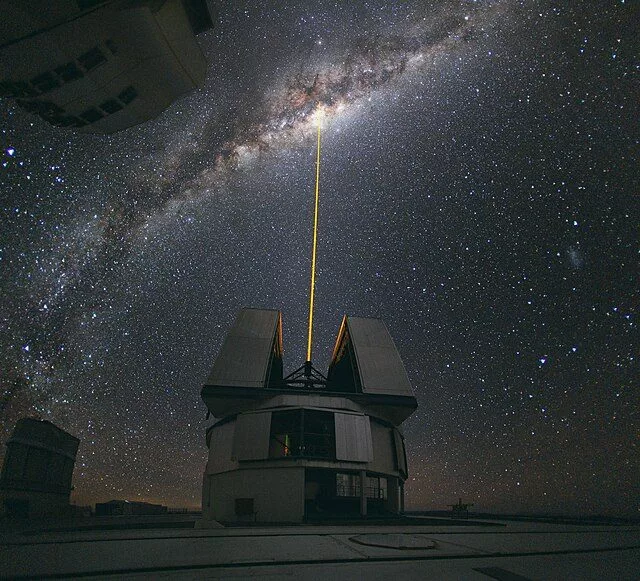
Olga1969, CC BY-SA 4.0
A Cosmic Mystery: The Strange Burst of Energy from a “Dead” Galaxy
The universe never ceases to amaze us. Astronomers recently stumbled upon a fascinating discovery: a sudden, powerful burst of energy—called a fast radio burst (FRB)—coming from the outskirts of a galaxy that’s been “dead” for billions of years. This mysterious event has scientists scratching their heads and rethinking what they thought they knew about these strange cosmic signals.
What’s a Fast Radio Burst?
Imagine a flash of light so quick and powerful that it could outshine the Sun, but only for a tiny fraction of a second. That’s essentially what a fast radio burst is—except instead of light, it’s a burst of radio waves. These FRBs are incredibly rare, and each one packs as much energy as the Sun emits over several days. But here’s the kicker: they only last for a millisecond. Blink, and you’ll miss it!

Astronomers first discovered FRBs in 2007, and ever since, they’ve been trying to figure out what causes them. Most of the FRBs we’ve detected come from young, active galaxies teeming with star formation, where conditions are ripe for creating high-energy objects like magnetars—ultra-powerful neutron stars that can generate these bursts.
But this latest FRB has thrown a cosmic wrench into that theory.
The Surprise Twist
This particular FRB came from a galaxy that scientists describe as “dead.” That means it stopped forming new stars billions of years ago, and as far as we know, there shouldn’t be anything in it capable of producing such a burst. Yet, here it is, an incredible burst of energy from what seems to be a lifeless corner of the universe.
So, what’s going on here? That’s exactly what scientists are trying to figure out. This discovery proves that FRBs don’t just come from young, energetic galaxies. They can also emerge from places where, by all accounts, nothing exciting should be happening.
What Could Be Causing This?
Astronomers have a few ideas:
- Old Stars with a Lot of Fight Left
Maybe the galaxy isn’t *completely* dead. Some older stars or remnants—like magnetars—might still have enough energy left to pull off one last hurrah, creating an FRB. - Something Totally Unexpected
It’s possible that some other cosmic phenomenon, like the collision of two neutron stars or interactions with black holes, might be responsible. These events can also release bursts of energy. - Hidden Star Formation
Another possibility is that there are small regions in the galaxy where new stars are secretly forming, and we just haven’t noticed them yet.
Why Does This Matter?
This discovery is a big deal for a few reasons:
- It Broadens Our Understanding of the Universe
If FRBs can come from old, inactive galaxies, it means there’s a lot we don’t understand about these bursts and the kinds of environments that can produce them. - It Challenges Assumptions About Galaxies
We often think of “dead” galaxies as places where nothing interesting happens anymore. This FRB proves that even in these ancient cosmic neighborhoods, surprises can still pop up. - It Helps Us Map the Universe
FRBs can act like cosmic yardsticks, helping scientists measure distances and learn more about the distribution of matter in the universe. The more we learn about them, the better tools they become.
What’s Next?
Scientists are already gearing up to search for more FRBs in unexpected places. They’ll use advanced telescopes and other tools to get a closer look at this “dead” galaxy and others like it. By studying these mysterious bursts, they hope to uncover new insights into how the universe works.

Why It’s Cool for All of Us
You don’t need to be an astrophysicist to appreciate how awesome this discovery is. It’s like the universe just handed us a cosmic mystery, challenging us to figure out its secrets. Even in the quietest, most unassuming parts of space, there’s still so much we don’t know—and that’s what makes astronomy so exciting.
So, the next time you look up at the night sky, remember: even in the quietest corners of the cosmos, something extraordinary could be happening. And thanks to discoveries like this one, we’re inching closer to unlocking the mysteries of the universe—one burst at a time.









